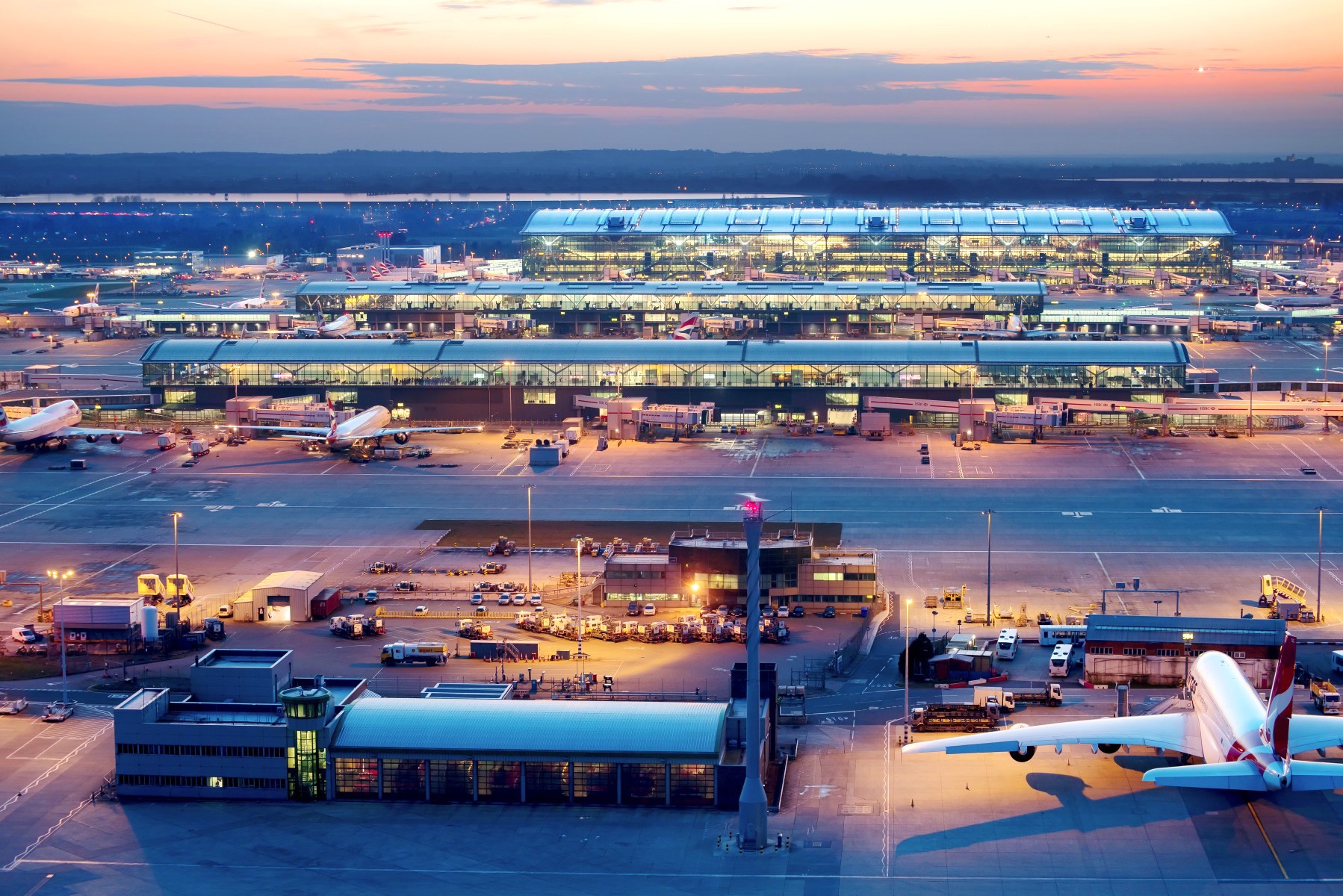EUROPE. New data released by ACI Europe shows October passenger traffic across the European airport network continued to defy inflated air fares and geopolitical tensions. The year-on-year increase for the month was +11.7%, with volumes standing at just -1.7% below pre-pandemic levels (October 2019).
Airports in the EU+ market (EU, EEA, Switzerland and UK) led the growth spurt, with passenger traffic increasing by +12.6% (vs. October 2022). EU+ airports came their closest ever to a full post-pandemic passenger traffic recovery at -1.3%.
Notably, international passenger traffic in the bloc nearly fully recovered (-0.1%) compared to domestic traffic (-7.1%).
Meanwhile, airports across the rest of Europe saw their year-on-year growth in October slowing to +7%. The October 2019 comparison shows that this airport segment performed at -3.8%, reversing previous gains which had seen a full recovery in Q3.

This largely reflected, ACI Europe noted, the impact of the conflict in Israel which erupted on 7 October [a reference to the Hamas terrorist attacks on that day, which were quickly followed by the Israel offensive in Palestine -Ed]. This saw passenger traffic in Israel collapse by -40.8% over the full month.
In keeping with recent passenger results, ACI Europe observed that performance gaps among national airport markets remained significant – reflecting geopolitical tensions as well as demand dynamics dominated by leisure and VFR, and driven by selective Ultra-Low Cost Carrier expansion.
ACI Europe highlighted that the best performances came from airports in emerging aviation markets boosted by traffic shifts resulting from war in Ukraine. These include Uzbekistan (+139%), Armenia (+66%) and Kazakhstan (+51%), and/or by Ultra-Low Cost Carrier stimulation – such as Albania (+134%).
Within the EU+ countries market, the best results came from airport countries reliant on incoming tourism and VFR (visiting friends and relatives) traffic, with Iceland (+25%), Greece (+21%), Slovenia (+20%) and Portugal (+16%) the top-performers.
Among the largest European markets, tourism-reliant Italy (+8%) and Spain (+8%) headed the list, followed by the UK (-2%), France (-3%) and Germany (-16%).

At the other end of the spectrum (and apart from Ukraine which has lost all commercial air traffic since February 2022) airports in Israel (-49%), Finland (-32%), Sweden (-22%), Slovakia (-20%) and the Czech Republic (-18%) remained the farthest from a full recovery.
ACI Europe Director General Olivier Jankovec gave this assessment of the key numbers: “The momentum towards a full passenger traffic recovery for Europe’s airports kept going strong in October – defying both air fares up by +36.3% and the conflict in Israel adding further geopolitical tensions.
“Leisure, VFR and to a lesser extent blended travel were key demand drivers, extending dynamics normally associated with the peak summer months into the autumn. At the same time and while still below where it used to be, business travel also contributed to getting Europe’s airports almost back to their pre-pandemic volumes.”
He added: “However, this ongoing traffic momentum did not benefit all airports equally. There is no doubt that Europe has become a fragmented and multi-speed airport market when looking at passenger traffic performance. This reflects structural changes which only reinforce competitive pressures upon airports.”
Hubs and other larger airports
Passenger traffic at the Majors (top 5 European airports) grew by +14.6% in October compared to the same period last year, but still remained –5% below their October 2019 pre-pandemic levels. London Heathrow (+18.1% vs. Oct 2022/-0.5% vs. Oct 2019) further reinforced its position as the busiest European airport. The British hub was followed by Istanbul (+11.2% vs. Oct 2022/+6.9% vs. Oct 2019), Paris-CDG (+10.5% vs. Oct 2022/-10% vs. Oct 2019), Amsterdam-Schiphol (+18.5% vs. Oct 2022/-9.5% vs. Oct 2019) and Frankfurt (+14.9% vs. Oct 2022/-11.9% vs Oct 2019).

Among other large airports, Manchester (+5.1%), Rome-Fiumicino (+0.6%) and Zurich (-0.1%) achieved a full recovery in October. They joined those which had already done so over the peak summer months – Athens (+18.9%), Palma de Mallorca (+12.4%), Paris-Orly (+11%), Lisbon (+9.5%), Istanbul-Sabiha Gökçen (+6%), Dublin (+4%) and London-Stansted (+3.7%).
Regional and smaller airports
ACI Europe also revealed that regional and smaller airports (airports with less than 10 million passenger per annum) kept exceeding their pre-pandemic passenger traffic volumes in October by an impressive +9.1%, which the trade body said reflects the previously-mentioned demand dynamics.However, there were substantial variations in performance among regional airports, with those with less than 1 million passengers per annum remaining below pre-pandemic levels (-1.1%).
ACI Europe noted that it was mostly regional airports serving popular tourist destinations and/or relying on Low-Cost Carriers that saw passenger volumes exceeding pre-pandemic levels – with some posting impressive results. These include Trapani (+259%), Perugia (+170%), Kutaisi (+83%), Burgas (+73%), Memmingen (+57%), Funchal (+52%), Zakynthos (+50%), Lodz (+46%), Menorca (+40%) and Kerkyra (+38%).
Data by airport groups
Throughout October, airports welcoming more than 25 million passengers per year (Group 1), between 10 and 25 million passengers (Group 2), between 5 and 10 million passengers (Group 3), between 1 million and 5 million passengers per year (Group 4), and between 100,000 and 1 million passengers (Group 5) reported an average change in passenger traffic of -4.5%, -8.1%, +13.2%, +6.3% and -1.1% respectively, as compared to their pre-pandemic (October 2019) levels.The airports that reported the highest increases in passenger traffic (vs October 2019) are as follows:Group 1: Athens (+18.9%), Palma de Mallorca (+12.4%), Paris-Orly (+11.0%), Lisbon (+9.5%), Istanbul (+6.9%).
Group 2: Porto (+21.1%), Málaga (+18.2%), Naples (+17.4%), Catania (+17.0%), Milan (+16.6%).Group 3: Milan (+568.8%), Sochi (+125.2%), Almaty (+52.6%), Astana (+49.6%), Belgrade (+32.2%).Group 4: Tirana (+133.7%), Burgas (+72.9%), Yerevan (+65.9%), Memmingen (+57.1%), Vrellë/Lipjan (+56.1%).Group 5: Trapani (+259.2%), Perugia (+169.6%), Porto Santo (+139.6%), Samarkand (+139.1%), Kutaisi (+83.1%). ✈










